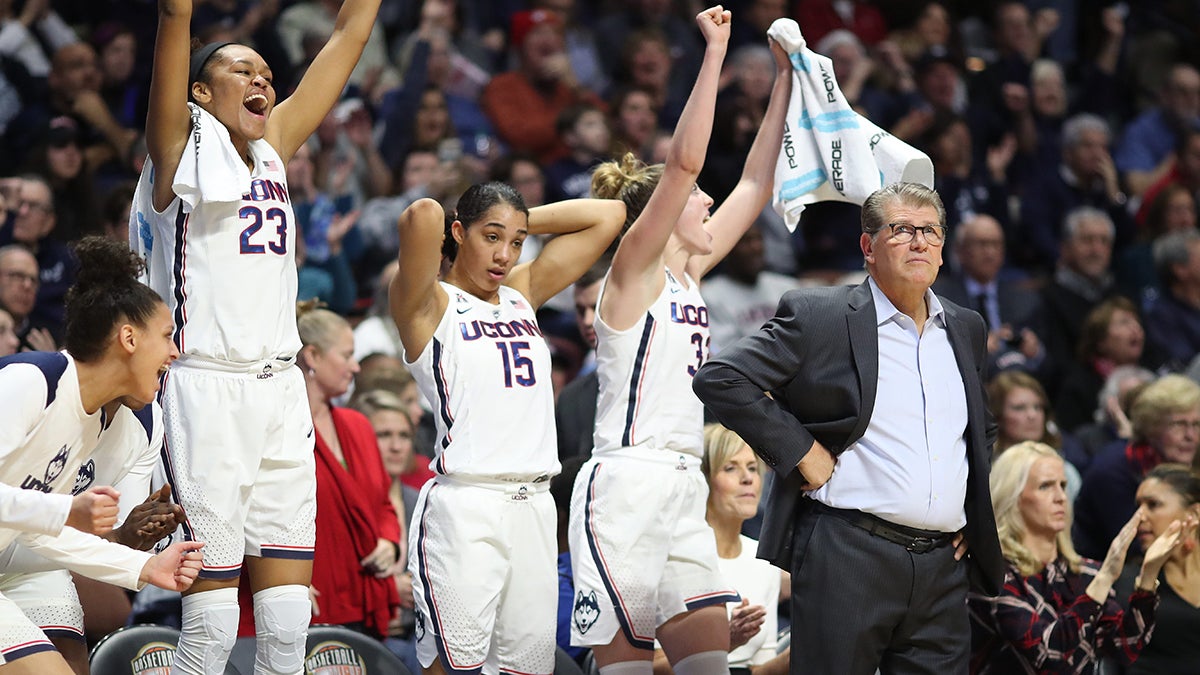Report shows women head coaches increasing, but not in statistically significant manner

In its sixth consecutive comprehensive report, the Tucker Center for Research on Girls & Women in Sport at the University of Minnesota looked at 970 head coach positions from 86 institutions during the 2017-18 academic year and found a slow rise in women head coaches.
Women held 403 of the 970 (41.5 percent) positions across seven NCAA Division I conferences compared to the 2014-15 academic year that was at 40.2 percent.
The evaluation included a breakdown of 26 sports excluding football and baseball but included both male and female head coaches and determined that women held the greater percentage in two sports.
Lacrosse (91.2 percent) and field hockey (84.2 percent) had the largest majority of female head coaches.
Reporter Cole Jacobson for The Daily Pennsylvanian wrote “most American men don’t grow up playing sports like field hockey, softball or even lacrosse once taken into account that men’s and women’s lacrosse have two totally different sets of rules.”
However, sports that had a large majority of male head coaches included: diving, fencing, water polo, cross country, track and field and swimming. In most of these sports, there is no difference in male and female events — the 100-meter butterfly in men’s swimming is also the 100 butterfly in women’s swimming and the stroke technique is the same for both genders.
“Emerging NCAA sports of rugby (85.7 percent) and equestrian (76.5 percent) ... provide positive examples of hiring women at the outset of program building and development,” according to the Tucker Center report.
The report showed dramatic differences in the number of women head coaches from institution to institution as well.
“Three institutions at the time of data collection (Southern Illinois University — Carbondale, Florida A&M University and Delaware State University) had over 80 percent women head coaches, while two institutions (University of Arkansas at Pine Bluff and Virginia Military Institution) had 0 percent women head coaches,” the report noted.
The Tucker Center data also showed women do not have an advantage when it comes to coaching at their alma mater.
“Not only is the rate similar for women (13.9 percent) and men (14.9 percent), but for all the coaches who coach at their alma mater, women comprise only 40.3 percent (204 of 506) of that group. That is striking because while men are alums, they did not play on the women’s teams they are coaching,” according to the report.
The report also said “men have a dual career pathway to coach at the NCAA Division I level at their alma maters, whereas women alumnae do not.”
The report concluded that although the data is headed in the right direction - up. The bad news is that the percentage of women coaches is not increasing in any statistically significant way, and remains remarkably stagnant. The data provides a benchmark and documentation to hold decision-makers accountable, creates dialogue and awareness, focuses collective and collaborative efforts, and provides a roadmap for where to dedicate resources.
“However, simply ‘adding more women’ is only part of the solution. The greatest target of opportunity to create positive and sustainable social change is to confront the systemic bias that permeates collegiate athletics. Women coaches — no matter the sport, institution or level of competition — face a complex and multi-level (individual, interpersonal, organizational, societal) set of barriers and bias,” according to the report.

